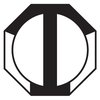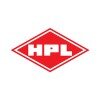PCB Designer
10+ PCB Designer Interview Questions and Answers


Q. How many layers worked on? How do you decide to go for multilayer?
I have worked on 4-10 layers. The decision to go for multilayer depends on complexity, signal integrity, and space constraints.
Consider complexity of the design - more layers may be needed for complex circuits
Evaluate signal integrity requirements - high speed signals may require multilayer PCBs
Take into account space constraints - multilayer PCBs can help reduce size of the board
Cost considerations - multilayer PCBs are more expensive to manufacture
Examples: High-speed commu...read more


Q. What is High-speed frequency? Worked on high speed design?
High-speed frequency refers to signals that operate at a fast rate, typically in the GHz range, requiring careful design considerations.
High-speed frequency signals operate in the GHz range
Design considerations include impedance matching, signal integrity, and controlled impedance routing
Examples of high-speed designs include DDR memory interfaces and high-speed serial communication interfaces


Q. Whats going on currently in electronics world market?
The electronics world market is currently experiencing advancements in IoT, AI, 5G technology, and sustainability.
Rapid growth of Internet of Things (IoT) devices connecting everyday objects to the internet
Advancements in Artificial Intelligence (AI) leading to smarter devices and automation
Rollout of 5G technology enabling faster and more reliable wireless communication
Focus on sustainability with eco-friendly materials and energy-efficient designs
Increased demand for wearab...read more


Q. Why are ESD diodes placed close to the connector?
ESD diodes are placed close to connector to protect the circuit from electrostatic discharge events.
ESD diodes help to divert any electrostatic discharge away from the sensitive components connected to the connector.
Placing ESD diodes close to the connector ensures that any ESD events are intercepted before reaching the rest of the circuit.
ESD diodes provide a path of least resistance for the discharge to follow, protecting the circuit from damage.
Examples of connectors where...read more

Asked in LumiLor

Q. You will be asked to design a PCB based on the given parameters.
Yes, I am capable of designing a PCB based on given parameters.
I will thoroughly understand the requirements and constraints of the project.
I will select appropriate components and layout the board accordingly.
I will ensure the design meets industry standards and is manufacturable.
I will perform design verification and testing to ensure functionality.
I will communicate effectively with the team and make necessary revisions.
Example: Designed a PCB for a smart home device with ...read more


Q. How do you place and route crystals to achieve the required frequency?
Proper crystal placement and routing are crucial for achieving the required frequency in PCB design.
Place the crystal as close as possible to the microcontroller to minimize trace length and interference.
Route the crystal traces away from noisy components and high-speed signals to reduce interference.
Use ground planes and proper decoupling capacitors to ensure a stable and clean signal.
Avoid crossing crystal traces with high-speed signals to prevent signal integrity issues.
Co...read more
PCB Designer Jobs




Asked in Anuvega Technologies

Q. Describe the PCB design process flow from schematic to completion.
The process flow of PCB designing involves schematic capture, component placement, routing, design rule check, and fabrication.
Capture the schematic diagram using a software tool like Altium Designer or Eagle CAD.
Place the components on the board layout and arrange them for optimal performance.
Route the connections between the components using traces and vias.
Perform a design rule check to ensure the design meets the required specifications.
Generate the Gerber files and send ...read more
Asked in Caliber Solutions

Q. What is the difference between a capacitor and an inductor?
Capacitors store electrical energy in an electric field, while inductors store energy in a magnetic field.
Capacitors store energy in the form of an electric field, while inductors store energy in the form of a magnetic field.
Capacitors are used to block DC current while allowing AC current to pass through, while inductors resist changes in current flow.
Capacitors are commonly used in filtering and smoothing circuits, while inductors are used in energy storage and filtering ap...read more
Share interview questions and help millions of jobseekers 🌟



Q. Explain the PCB design flow.
PCB Design flow involves schematic capture, component placement, routing, design verification, and manufacturing preparation.
Schematic capture: Creating a visual representation of the circuit using software like Altium Designer or Eagle.
Component placement: Placing components on the board to optimize signal integrity and minimize interference.
Routing: Creating traces to connect components while considering factors like signal integrity, power distribution, and electromagnetic...read more


Q. What kind of DRC errors have you faced?
Common DRC errors include clearance violations, trace width violations, and unconnected nets.
Clearance violations occur when components are too close together
Trace width violations happen when traces are too narrow
Unconnected nets occur when a net is not properly connected to a component
Other common DRC errors include overlapping objects and incorrect pad sizes

Asked in Anthem Biosciences

Q. What is a resistor?
A resistor is an electronic component that resists the flow of electrical current, used to control the amount of current in a circuit.
Resistors are passive components that have a specific resistance value measured in ohms (Ω).
They are used to limit current, divide voltage, and protect components in a circuit.
Resistors come in various types such as carbon film, metal film, and wirewound.
Examples of resistors include 1kΩ, 10kΩ, and 100Ω resistors.

Asked in Hpl Electric & Power

Q. What is the workflow of PCB design?
PCB design workflow involves schematic design, component placement, routing, design verification, and manufacturing.
Start with schematic design to define the circuit connections
Place components on the board layout
Route traces to connect components based on design rules
Perform design verification to check for errors and signal integrity
Prepare design files for manufacturing
Asked in Embedded Powertech

Q. Are you familiar with PCB design?
Yes, I know PCB Design.
I have experience in designing PCB layouts using software such as Altium Designer and Eagle PCB.
I am familiar with industry standards and best practices for PCB design.
I have knowledge of PCB fabrication processes and materials.
I have worked on projects involving high-speed digital and analog circuits.
I am able to troubleshoot and debug PCB designs.
I am constantly learning and staying up-to-date with new technologies and techniques in PCB design.
Asked in RosLabs

Q. Explain sampling.
Sampling is the process of selecting a subset of a population to gather data or observations.
Sampling involves selecting a representative group from a larger population.
Different sampling methods include random sampling, stratified sampling, and convenience sampling.
Sampling helps in making inferences about the entire population based on the characteristics of the sample.
It is important to ensure that the sample is unbiased and accurately represents the population.
Examples of...read more
Interview Questions of Similar Designations
Interview Experiences of Popular Companies








Reviews
Interviews
Salaries
Users

















